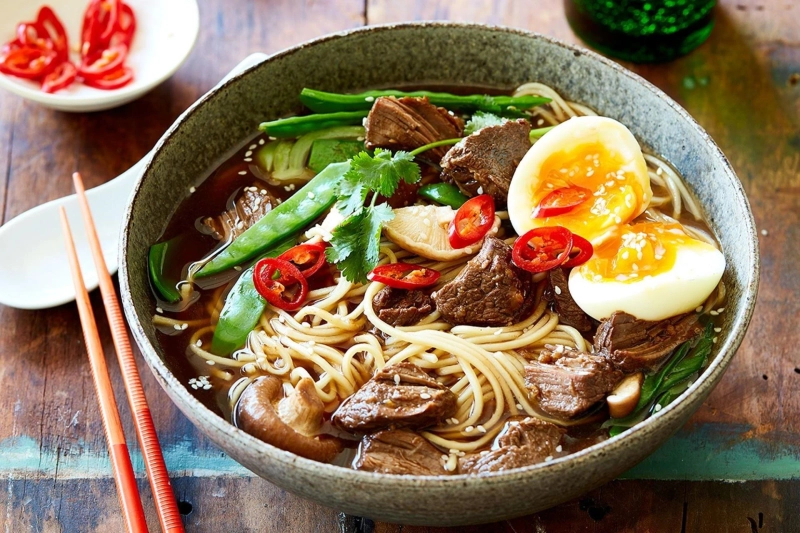Ramen noodles, once a humble dish from Japan, have become a global sensation, captivating taste buds and inspiring chefs worldwide. This beloved comfort food, with its rich history and endless variations, has evolved into a cultural icon that transcends borders.
A Brief History
Ramen's origins trace back to China, where it was brought to Japan in the late 19th century by Chinese immigrants. Initially a simple dish of wheat noodles served in broth, ramen underwent a transformation in Japan, adapting to local tastes and culinary traditions. By the mid-20th century, it had become a staple in Japanese cuisine, served everywhere from street vendors to Michelin-starred restaurants.
The Components of Ramen
At its core, ramen consists of four essential elements: noodles, broth, toppings, and seasonings. The noodles, made from wheat flour, water, and kansui (alkaline water), vary in thickness and texture, ranging from thin and delicate to thick and chewy. The broth forms the soul of ramen, crafted meticulously from pork bones (tonkotsu), chicken (shoyu), miso, or seafood, simmered for hours to extract deep flavors.
Toppings are where ramen chefs showcase creativity, with options like tender chashu pork belly, marinated bamboo shoots (menma), nori seaweed, soft-boiled eggs (ajitsuke tamago), and scallions. Seasonings such as soy sauce, miso paste, sesame oil, and chili paste add layers of complexity and heat to the broth, enhancing the overall taste experience.
Regional Varieties
Across Japan and beyond, regional variations of ramen reflect local ingredients and preferences. In Sapporo, Hokkaido, miso ramen reigns supreme, featuring a robust miso broth and hearty toppings like buttered corn and potatoes. Tokyo's shoyu ramen boasts a clear broth flavored with soy sauce, often accompanied by delicate toppings such as menma and nori. In Fukuoka, tonkotsu ramen dominates, known for its creamy, pork bone broth and thin, straight noodles.
Ramen Goes Global
Beyond Japan, ramen has captured the hearts and palates of people worldwide. Cities like New York, Los Angeles, and London boast thriving ramen scenes, with chefs putting unique spins on traditional recipes. Vegetarian and vegan versions cater to diverse dietary preferences, utilizing ingredients like tofu, mushrooms, and seaweed to replicate the umami-rich flavors of meat-based broths.
The Ramen Experience
Eating ramen is not just a meal; it's an experience. Whether slurped from a humble bowl at a street stall or savored in an elegant restaurant setting, ramen invites diners to engage all their senses. The aroma of simmering broth, the sight of perfectly arranged toppings, the texture of springy noodles—all come together to create a symphony of flavors that comfort and satisfy.
Conclusion
Ramen noodles, with their rich history, diverse flavors, and cultural significance, continue to captivate food enthusiasts worldwide. From its humble beginnings in Japan to its global popularity today, ramen embodies the artistry of culinary craftsmanship and the joy of shared dining experiences. Whether you're a first-time slurper or a seasoned ramen aficionado, each bowl tells a story of tradition, innovation, and the universal love of good food.


